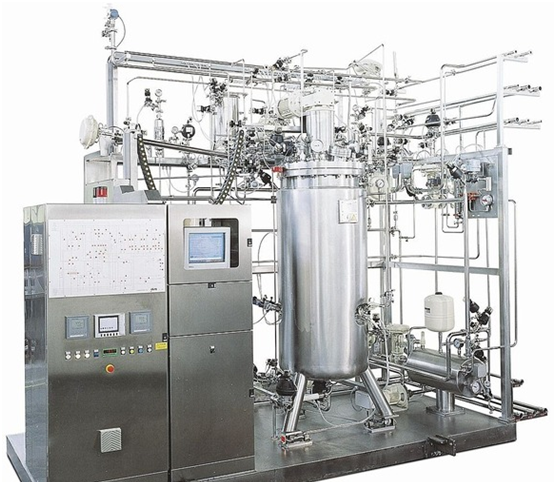Microorganisms have played significant roles over the years in the alleviation of diseases and infections in man, animals and plants. Most of the drugs and/or antimicrobial agents used to keep infectious microbes at bay and even vaccines used for vaccination exercises are naturally sourced from microorganisms. However, microbes also play significant roles in helping to produce foods with high quality, lesser toxicity, improved taste and improved flavours. Microbiological productions is sole hinged on the discovery and harnessing of some selected strains of microorganisms that have the potential to produce goods/products in large amounts and over a sustained period of time since wealth creation and profit making is one of the major objectives of industrial microbiology.
Industrial microbiology is the branch of microbiology that deals with the application of microorganisms for the production of products or goods that are of economic importance to man, plants, animals and the environment. Industrial microbiology is mainly concerned with the commercial exploitation of microorganisms for the sole benefit of mankind and the environment. It is an aspect or sub-discipline of microbiology that harnesses the physiology and metabolic processes of industrially important microorganisms to produce products in large amounts while maximizing profit in the process. Industrial microbiologists work in the pharmaceutical industry, food industries and in water treatment plants and other industries where microorganisms are manipulated with the sole purpose of making profit while producing goods and services that are of tremendous economic importance.
Industrial microbiology is an area of applied microbiology which deals with the screening, improvement, management, and exploitation of microorganisms that are of industrial importance including bacteria, yeasts, moulds, actinomycetes and viruses for the production of various useful end products that are of economic importance on a very large scale. It includes the use of microorganisms to manufacture food or industrial products in large quantities. Numerous microorganisms are used within industrial microbiology; and these microorganisms include naturally occurring organisms, laboratory selected mutant microbial strains, or even genetically modified microorganisms (GMMs). In industrial microbiology, microorganisms (especially some selected strains of microbes) are studied and utilized in the production of new products with increased shelf life, taste and quality. Industrial microbiology also deals with products associated with the food and dairy industries, with the prevention or deterioration of processed or manufactured goods, and with waste disposal management and pollution control. It is the field of microbiology that puts microorganisms to work and harness their metabolic and secretive potentials to produce materials and substances that are of immense benefits to man, animals and plants in the area of medicine, food, fertilizers and other useful chemicals.
The history of industrial microbiology is tied to the discovery of fermentation (derived from the Latin word fevere – which means “to boil”), a microbiological process in which microorganism’s breakdown energy-carrying compounds or substrates under aerobic or anaerobic condition to produce economically useful products. Mankind has been producing alcoholic beverages and dairy foods since the beginning of civilization but was ignorant of the roles of microorganisms in the production of these foods/beverages. The earliest types of fermented foods known to mankind include beer, wine, and leavened bread (made primarily by yeasts) and cheeses (made by bacteria and moulds). These were soon followed by East Asian fermented foods which included yogurts and other fermented milk products like pickles, sauerkraut, vinegar (soured wine), butter, and a host of other traditional alcoholic beverages that revealed the activities of microbes in food transformation. Some recent or modern fermentation products include microbial enzymes, industrial chemicals and biofuels, healthcare products and pharmaceuticals and food supplements or additives.
Fermentation occurs when microorganisms of industrial importance breakdown susceptible substrate molecules as part of their own metabolic processes; and fermentation processes are probably one of the oldest arts of food production and preservation. Fermentation can also be defined as the chemical transformation of organic substances into simpler compounds by the action of enzymes, complex organic catalysts, which are produced by microorganisms such as molds, yeasts, actinomycetes or bacteria. In some fermentation processes, important by-products (known as metabolites) such as alcohol or various gases (e.g. carbondioxide) are also produced. Most fermentation processes are activated by microorganisms including actinomycetes, molds, yeasts, or bacteria, working singularly or together; and this goes to show the significance of these microbes in fermentation processes. Fermentation processes occurs inside a fermenter – which are stirred tank bioreactors that that offer the best growth conditions for microbial cells or microorganisms and aid in the fermentation process (Figure 1). The phrase fermenter and fermentor can be used interchangeably. However, fermentor can also be referred to the microorganisms which causes fermentation. Some fermentation processes are highly desirable because of the end product that they produce even though some microbes grow in food to cause spoilage and diseases. Milk on standing became mildly acidic and eventually turns into cheese; and fruit and fruit juices when left over some period of time acquired alcoholic flavors and cabbage can be turned into sauerkraut; and all of these changes in food from one form to another impacted positively on the taste, digestibility, flavors and quality of the food produced as a result of the fermentation processes they passed through.

The early fermentation processes practiced by mankind since antiquity (and prior to the discovery of industrial microbiology) included the leavening of bread, production of various fermented foods, beverages, wine and beer and the production of vinegar and other soured foods or products. These traditional fermentation processes were the basis for the actual development of industrial microbiology. Nevertheless, the discovery of the microscope and microorganisms as well as the understanding of the physiological and metabolic processes of microbes allowed scientists to understand the mechanisms behind fermentation processes; and this paved the way for the development and advancement of the field of industrial microbiology as one of the scope of microbiology.
Several microbiologists contributed to the field of industrial microbiology but the work of Louis Pasteur in the late 1850’s – which demonstrated beyond all reasonable doubt that the alcoholic fermentation taking place in beer and wine was as a result of microbial activities going on in it rather than a chemical process was most remarkable to the development of the field of industrial microbiology. Louis Pasteur noted that microorganisms were responsible for the spoilage of food, wine and beer; and that fermentation could occur both in the absence of oxygen and in the presence of it. Pasteur’s discovery of the role of microbes in fermentation processes lead to the breakthrough that brought about the process of heating liquid foods including milk in order to kill spoilage and disease-causing microorganisms in them. This process which is still applied today in most food industries is known as pasteurization; and it was named after its discoverer Louis Pasteur.
Pasteurization is defined as the heating of milk and other liquids to destroy microorganisms that can cause spoilage or disease. Microorganisms that are of industrial importance produce metabolites that are used industrially to produce several products that are of economic importance to man and the environment. Primary and secondary metabolites are the two main types of metabolites that microbes produce during and after their growth. While primary metabolites are very essential to the growth, development and reproduction of the microorganisms, secondary metabolites do not play a role in the growth, development, and reproduction of the microbes. Instead, they are formed during the end of the exponential growth phase of the microbe or near the stationary phase of growth unlike the primary metabolites that are formed at the exponential phase of growth. Both the primary and secondary metabolites can be used in industrial microbiology to obtain amino acids, develop vaccines and antibiotics, and isolate chemicals necessary for organic synthesis. Understanding how microbes produce these metabolites is one of the core aspects of industrial microbiology.
References
Bader F.G (1992). Evolution in fermentation facility design from antibiotics to recombinant proteins in Harnessing Biotechnology for the 21st century (eds. Ladisch, M.R. and Bose, A.) American Chemical Society, Washington DC. Pp. 228–231.
Nduka Okafor (2007). Modern industrial microbiology and biotechnology. First edition. Science Publishers, New Hampshire, USA.
Das H.K (2008). Textbook of Biotechnology. Third edition. Wiley-India ltd., New Delhi, India.
Latha C.D.S and Rao D.B (2007). Microbial Biotechnology. First edition. Discovery Publishing House (DPH), Darya Ganj, New Delhi, India.
Nester E.W, Anderson D.G, Roberts C.E and Nester M.T (2009). Microbiology: A Human Perspective. Sixth edition. McGraw-Hill Companies, Inc, New York, USA.
Steele D.B and Stowers M.D (1991). Techniques for the Selection of Industrially Important Microorganisms. Annual Review of Microbiology, 45:89-106.
Pelczar M.J Jr, Chan E.C.S, Krieg N.R (1993). Microbiology: Concepts and Applications. McGraw-Hill, USA.
Prescott L.M., Harley J.P and Klein D.A (2005). Microbiology. 6th ed. McGraw Hill Publishers, USA.
Steele D.B and Stowers M.D (1991). Techniques for the Selection of Industrially Important Microorganisms. Annual Review of Microbiology, 45:89-106.
Summers W.C (2000). History of microbiology. In Encyclopedia of microbiology, vol. 2, J. Lederberg, editor, 677–97. San Diego: Academic Press.
Talaro, Kathleen P (2005). Foundations in Microbiology. 5th edition. McGraw-Hill Companies Inc., New York, USA.
Thakur I.S (2010). Industrial Biotechnology: Problems and Remedies. First edition. I.K. International Pvt. Ltd. New Delhi, India.
Discover more from #1 Microbiology Resource Hub
Subscribe to get the latest posts to your email.


